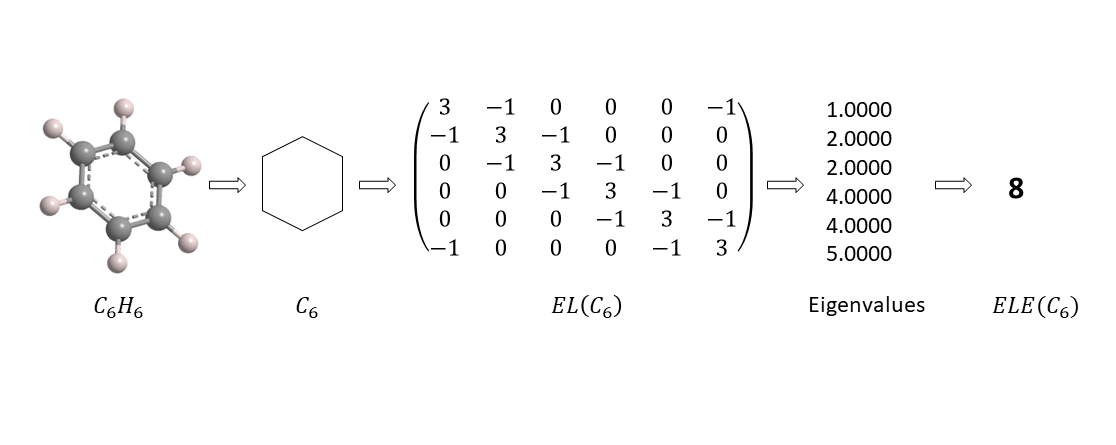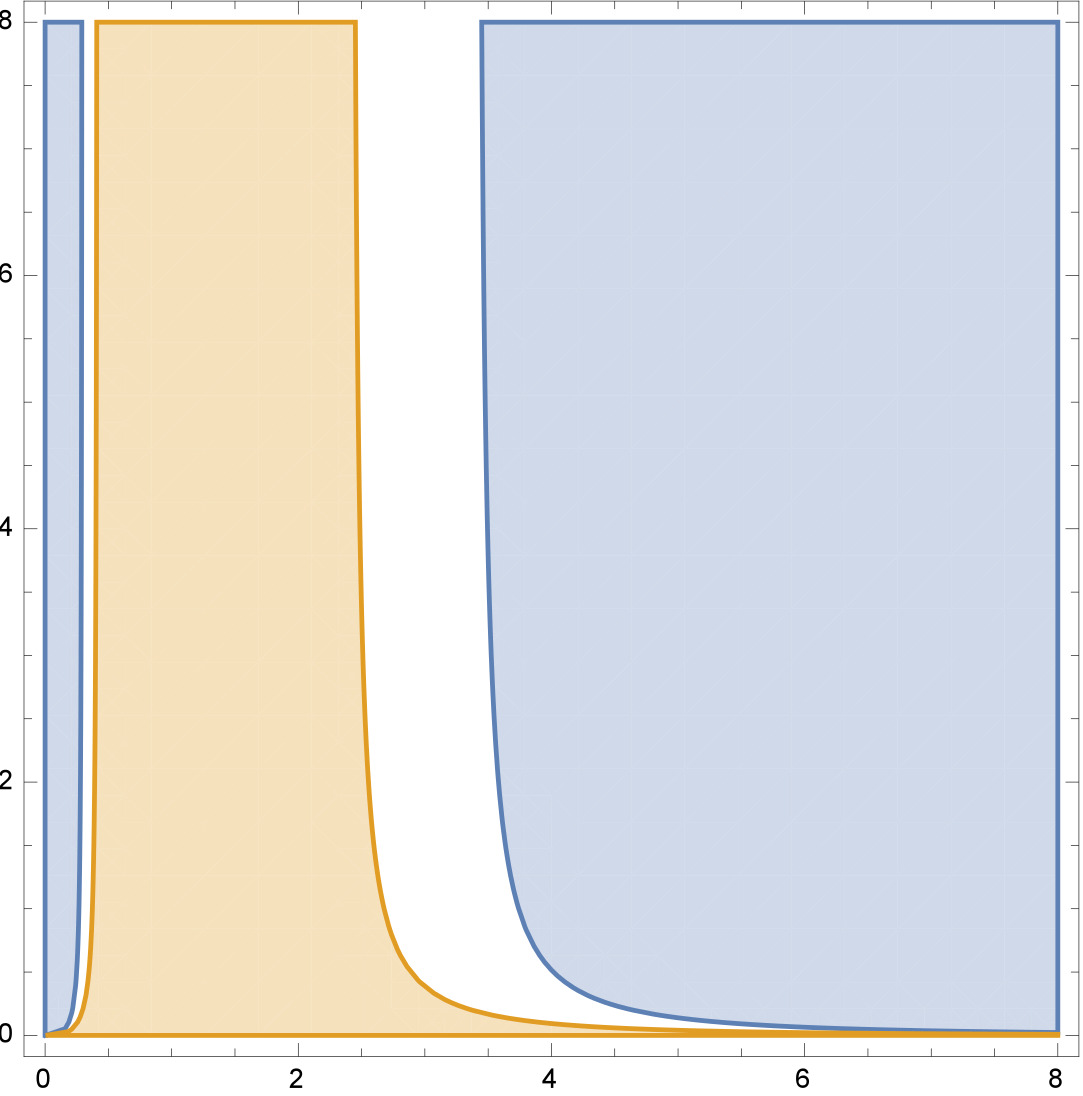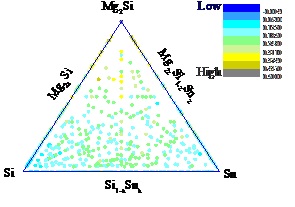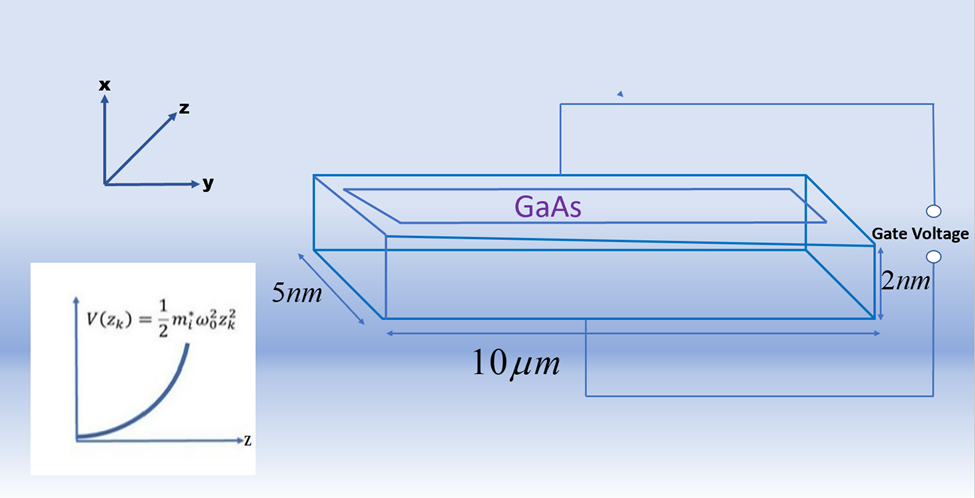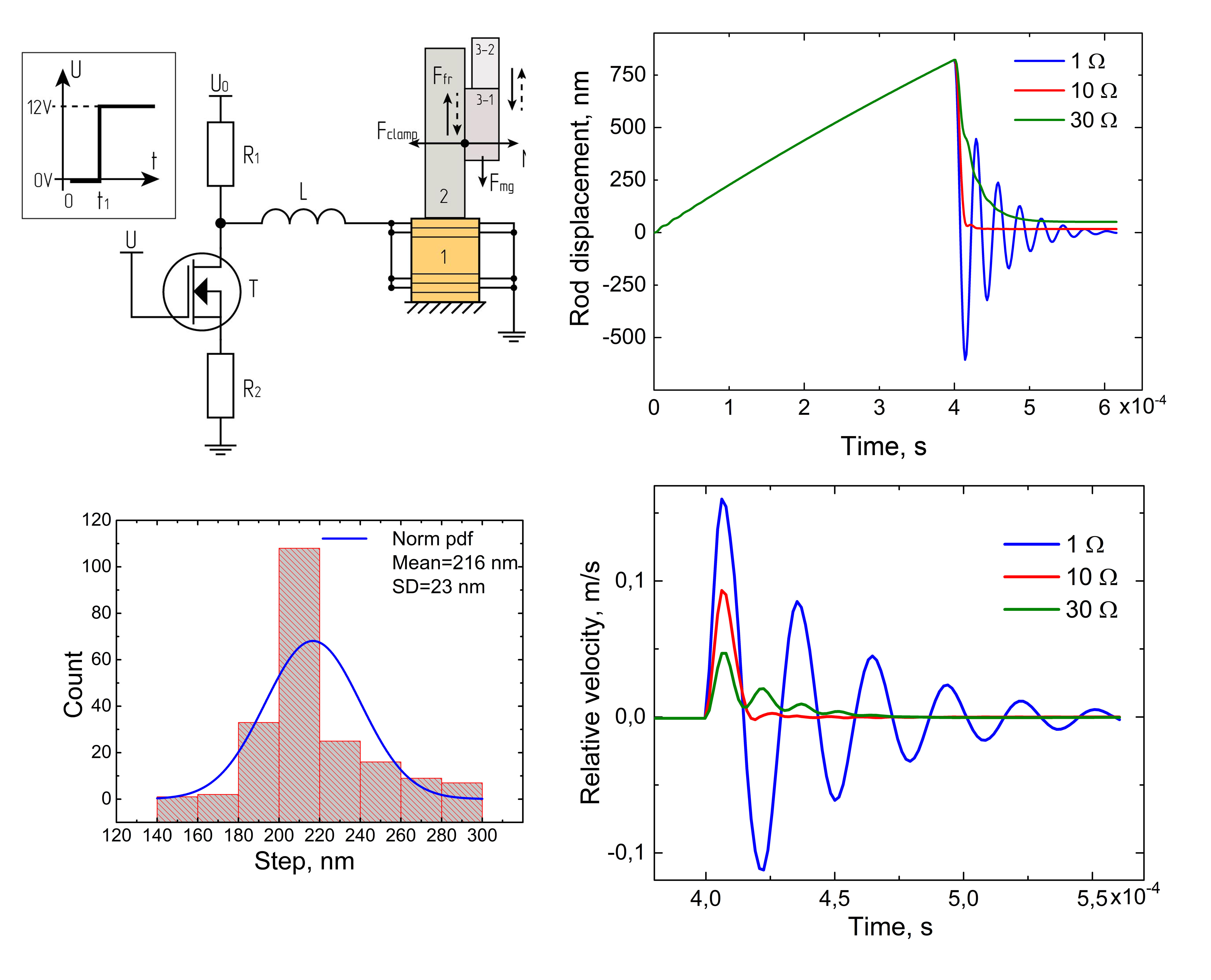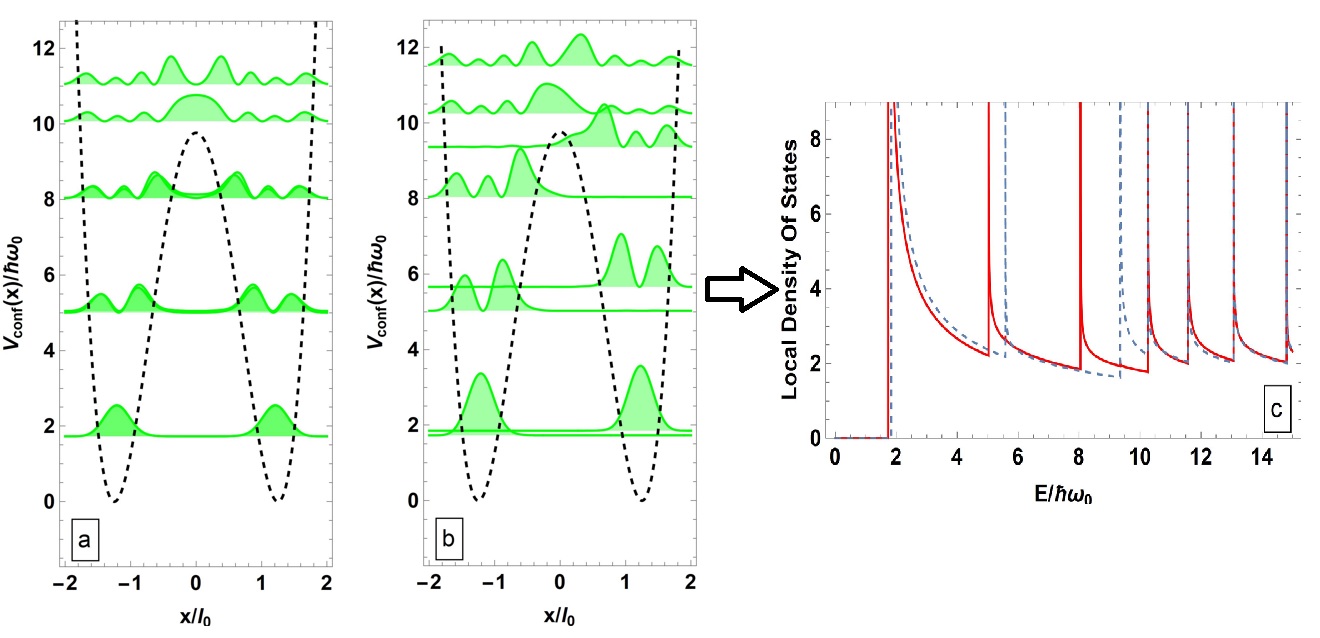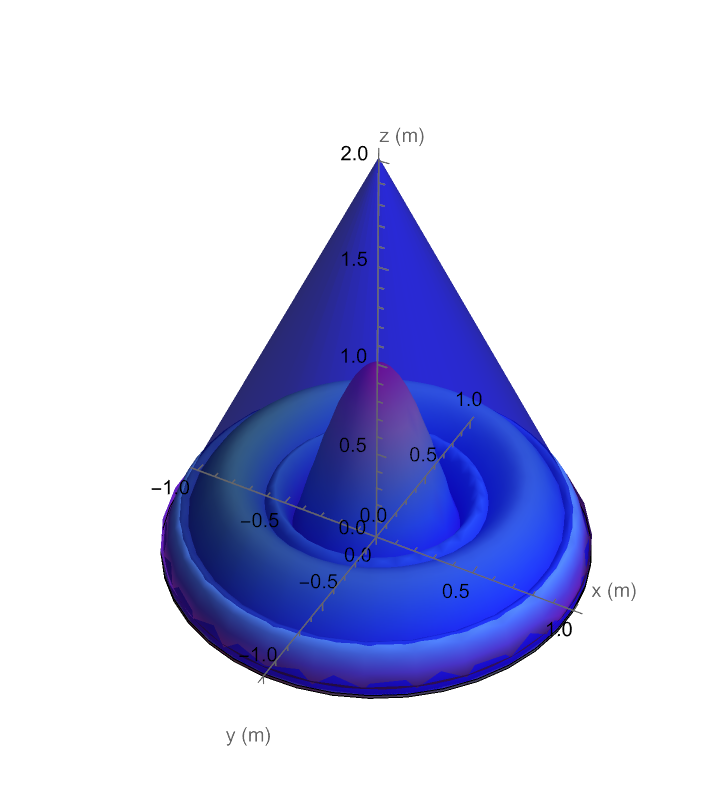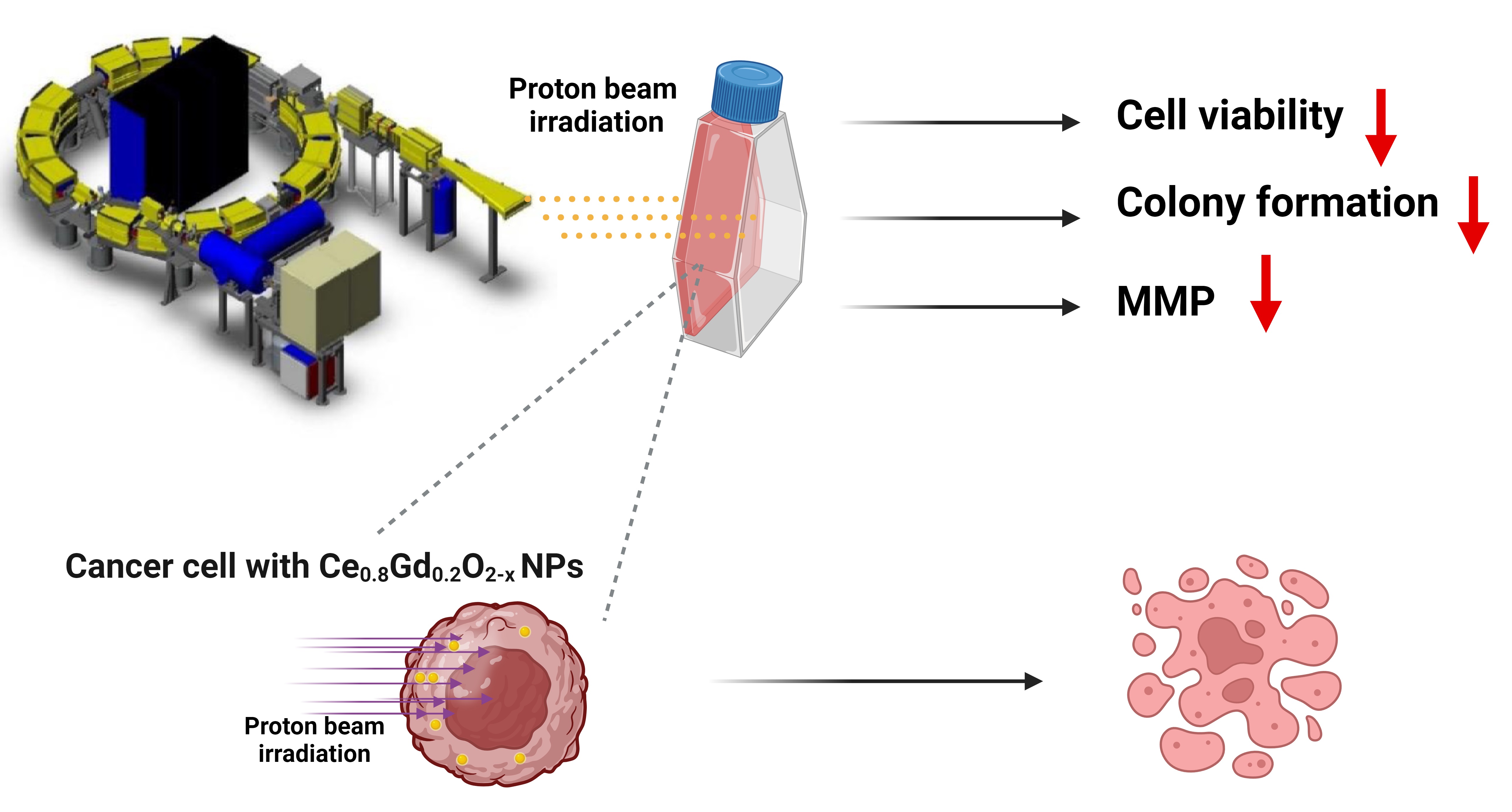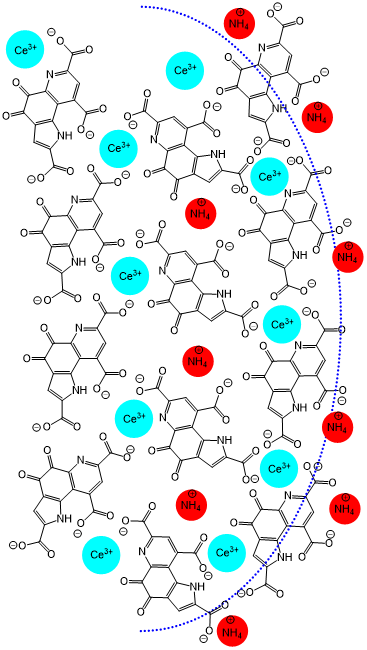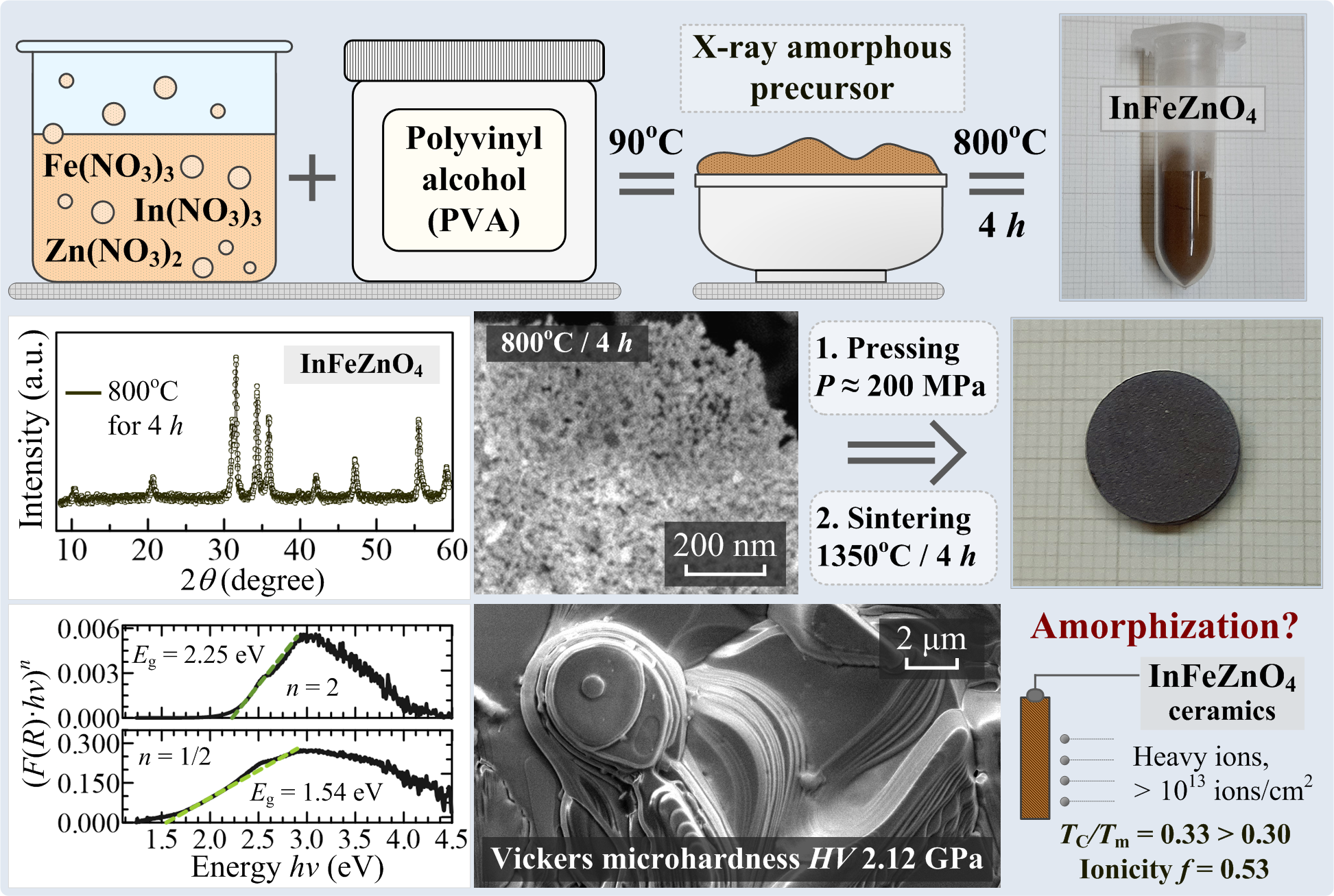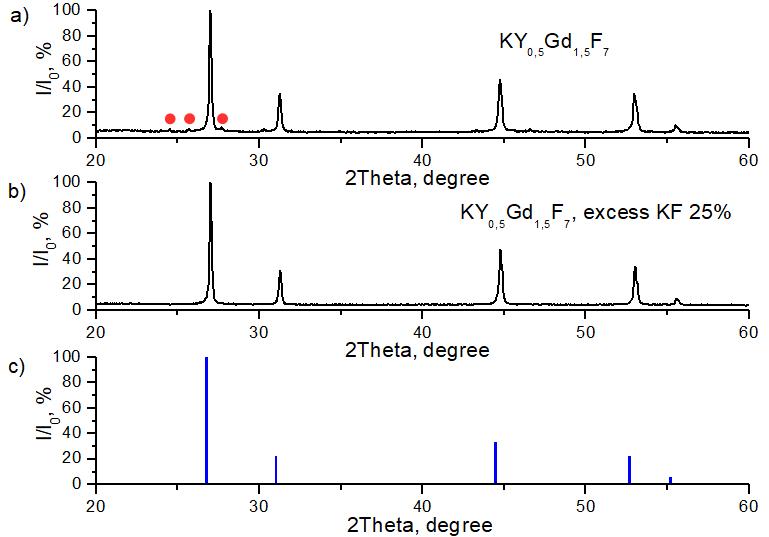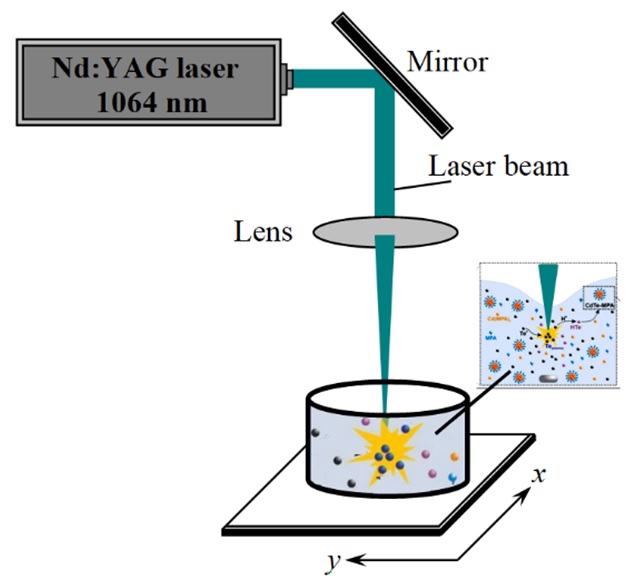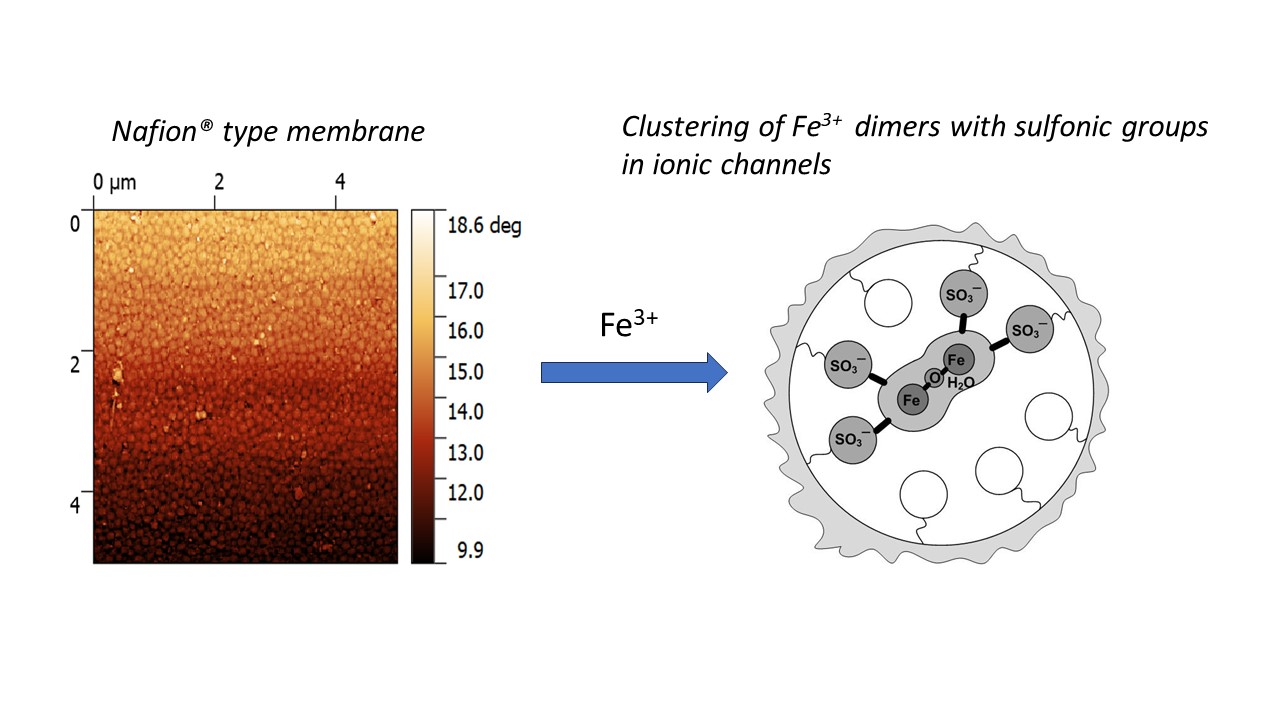MATHEMATICS
Let G be a simple, finite, undirected and connected graph. The eccentricity of a vertex v is the maximum distance from v to all other vertices of G. The eccentricity Laplacian matrix of G with n vertices is a square matrix of order n, whose elements are elij , where elij is −1 if the corresponding vertices are adjacent, elii is the eccentricity of vi for 1 ≤ i ≤ n, and elij is 0 otherwise. If ǫ1, ǫ2, . . . , ǫn are the eigenvalues of the eccentricity Laplacian matrix, then the eccentricity Laplacian energy of G is ELE(G) = Xn i=1 |ǫi − avec(G)| , where avec(G) is the average eccentricities of all the vertices of G. In this study, some properties of the eccentricity Laplacian energy are obtained and comparison between thge eccentricity Laplacian energy and the total π−electron energy is obtained.
Phase transitions of the mixed spin-1/2 and spin-1 Ising model under the presence of an external field on the general order Cayley tree are investigated within the framework of the tree-indexed Markov chains. We find the conditions that ensure the existence of at least three translation-invariant Gibbs measures for the model on the Cayley tree of order k. We are able to solve the model exactly on the binary tree (k = 2) under the specific external field. The main attention is paid to the systematic study of the structure of the set of the Gibbs measures. We find the extremality and non-extremality regions of the disordered phase of the model on the binary tree.
The paper discusses the inverse source problem for the subdiffusion equation in the Sobolev space. The direct and inverse problems are transformed into operator equations to derive solutions. The uniqueness and existence of a strong solution to the direct problem are proven. The inverse problem is reduced to an operator equation, and the well-definedness and continuity of the corresponding resolvent operator are proven.
PHYSICS
Different types of skyrmionics magnetic configurations can be created and manipulated on different types of nanostructures. In this research, we use micromagnetic simulations to study the dynamics of a skyrmionium on a racetrack in the presence of a semicircular magnetic defect. We considered a defect with physical parameters different from those of the racetrack itself. Our results show that, depending on the size of the defect, the width of the racetrack, and the intensity of the spin current density, it is possible to manipulate the trajectory of a skyrmionium. Also, we obtain the interaction energies between the skyrmionium and the magnetic defect and derive phase diagrams showing the different dynamic states that can be obtained during the movement of the skyrmionium.
The search of minimal enthalpy structures of ternary magnesium alloys of different stoichiometry MgxSiySnz under pressure P ≤ 6 GPa has been performed using the software suite USPEX implementing the evolution algorithm combined with the density functional theory (DFT) approach. The evolutionary search has yielded new possible ternary compounds of the stoichiometries Mg12Si3Sn, Mg4SiSn and Mg6Si3Sn, which have negative enthalpy of formation at pressures in the range of 0 to 10 GPa and which are not substitution solutions. These compounds have metallic properties and formation energies comparable to those of binary silicides MgxSiy.
The present study is dedicated to study the effect of Temperature and Hydrostatic Pressure on the absorption coefficient and refractive index of one-dimensional semi-parabolic excitonic GaAs QD’s by applying the compact density matrix formalism. Calculations are performed to obtain the excitonic state wave functions and energies in the strong confinement regime using the effective mass approximation. A significant dependence of nonlinear optical refractive index and absorption coefficient on hydrostatic pressure and temperature can be observed for excitonic and without excitonic case. Our investigations show that the peaks blue/red shifts are substantial when the excitonic interactions are taken into account. The opposite effects caused by temperature and pressure have substantial practical importance as they extend an alternative approach to tune and control the optical frequencies resulting from the transitions. The comparative analysis of the analytical optical properties of excitonic system facilitates the experimental identification of these transitions which are often close. We have attempted a comparison of the absorption coefficient obtained in the present work with experimental data at T ∼= 10 and 100 K and found that the theoretical prediction is in agreement for T ∼= 10 K and it is in slight deviation from the experimental data for higher temperatures. The whole of these conclusions may have broad implications in future designing of Optoelectronic devices.
A vertical inertial nanostep piezoelectric drive is considered. A virtual model was created, and the operating modes of a real drive were studied by numerical experiment. Piezo electromechanical resonance was discovered and a method to eliminate resonant vibrations by increasing electrical losses in the discharge circuit of the piezo actuator capacitance was proposed. A satisfactory agreement between the calculated and experimental data for the drive steps in the nanometer displacement range was obtained.
In this paper, we explore a hybrid quantum communication protocol that operates concurrently over fiber optic and atmospheric channels. This new protocol addresses challenges in urban settings where laying optical fiber may be impractical or costly. By integrating the subcarrier wave (SCW) quantum key distribution (QKD) with phase coding, our approach enhances the flexibility and reliability of quantum communication systems. We have developed and tested an atmospheric optical module equipped with an auto-tuning system to ensure precise optical axis alignment, crucial for minimizing signal loss in turbulent environments. Experimental results demonstrate stable sifted key rates and low quantum bit error rate (QBER) across various channel lengths, confirming the efficacy of our hybrid protocol in securing communication over diverse transmission environments.
This study explores the effect of the structural parameters of the confining potential and external magnetic field on the electronic properties of a double quantum wire (DQW) system. Using theoretical analysis and graphical representations, we investigate the effects of varying parameters such as structural parameters (µ and λ) on the confinement potential profiles, probability density distributions and energy spectra of DQWs. Furthermore, we investigate the effect of variation of the confinement potential, the Rashba spin-orbit coupling and the external magnetic field on the energy spectra and the local density of states of the system. The changes in the energy spectra and the local density of states of the system due to Rashba spin-orbit coupling, and the external magnetic field were highlighted. The shifts and variations in energy and in the local density of states were discussed in detail. Our research results provide valuable insights into possibility of using the structural parameters and the external magnetic fields for control the electronic properties of the double quantum wire system.
We study the conditions for the formation and transformation of the Bessel plasmon-polariton field in a dielectric-metal structure excited by a Bessel light beam with arbitrary polarization. The effect of the metal layer thickness on the resulting plasmon field structure is investigated. The formation of Bessel plasmonpolaritons in a scheme consisting of a conical axicon with its base in contact with a silver layer of defined thickness is simulated.
CHEMISTRY AND MATERIAL SCIENCE
T Proton beam therapy is being used increasingly to treat melanoma. Meanwhile, proton beam therapy has a number of disadvantages that can be reduced or completely eliminated through the use of modern innovative approaches, including the use of nanoradiosensitizers. Here we showed the possibility of using redox-active dextran-stabilized Ce0,8Gd0,2O2−x nanoparticles (Ce0,8Gd0,2O2−x NPs) as a radiosensitizer to promote mouse melanoma cell death under proton beam irradiation in vitro. It has been shown that these Ce0,8Gd0,2O2−x NPs do not reduce the viability and survival rate of both NCTC L929 normal mouse fibroblasts and B16/F10 mouse melanoma cells in a wide range of concentrations. However, Ce0,8Gd0,2O2−x NPs significantly reduce the mitochondrial membrane potential of these cells. Additionally, it has been shown that Ce0,8Gd0,2O2−x NPs are able to effectively reduce the clonogenic activity of B16/F10 melanoma cells under proton beam irradiation. Meanwhile, proton beam irradiation remarkably reduced the clonogenic activity and MMP of melanoma cells. Hence, Ce0,8Gd0,2O2−x NPs act as a radiosensitizer in B16/F10 mouse melanoma cells under proton beam irradiation. We assume that such radiosensitizing effect of Ce0,8Gd0,2O2−x NPs is due to a decrease of the membrane mitochondrial potential. Thus, the use of Ce0,8Gd0,2O2−x NPs in combination with proton beam irradiation is a promising approach for the effective treatment of melanoma.
Nanoscale cerium oxide (CeO2) is a bioavailable inorganic nanozyme exhibiting pronounced redox activity and capable of acting as a delivery system for bioactive compounds. We have synthesized and characterized novel CeO2 nanoparticles modified with pyrroloquinoline quinone (CeO2@PQQ). TEM analysis revealed the diameter of the CeO2@PQQ NPs to be approximately 4 nm, with a hydrodynamic diameter of 62 nm (DLS). Furthermore, the zeta potential was found to be −38 mV (ELS), and FTIR analysis confirmed the adsorption of PQQ on the surface of CeO2 NPs. The results demonstrated that CeO2@PQQ NPs exhibited no cytotoxic effects on L929 cells within the concentration range of 0.1 – 10 µM and did not adversely affect the mitochondrial function of the cells. It was demonstrated that CeO2@PQQ NPs exhibited protective effects against L929 cells when induced with oxidative stress (200 µM H2O2), leading to preservation of cell mitochondrial potential levels up to 76 % of control and cell viability up to 78 % before and after incubation with CeO2@PQQ NPs. The results indicate that CeO2@PQQ NPs can be regarded as a novel hybrid nanosystem that exhibits mitochondrial-directed control of oxidative stress.
A method for low-temperature synthesis of InFeZnO4 oxide from an X-ray amorphous precursor formed as a result of the thermal decomposition of dehydration product of a mixture of polyvinyl alcohol and iron, indium, and zinc nitrate solutions has been developed. Using TG/DSC and XRD, the InFeZnO4 phase has been shown to be formed in the temperature range of 370–420◦C. Using the XRD method, after the heat treatment of the precursor at 800◦C for 4 hours, nanocrystalline InFeZnO4 with an average particle size (CSR) of ≈36 nm has been found to be formed. According to SEM, they do not have a clear facet and form a homogeneous cellular microstructure of the powder. The absence of organic residues and moisture in it has been confirmed by FTIR spectroscopy. From the DRS data, it has been found that the band gap energy Eg of InFeZnO4 for the cases of indirect and direct transitions is 1.54 eV and 2.25 eV, respectively. Ceramics produced from nanocrystalline InFeZnO4 by high-temperature sintering have a density equal to 5160 kg/m3 (≈86 % of the theoretical one). Their microhardness, measured by the Vickers method, is 2.12 GPa. The radiation resistance of InFeZnO4 has been predicted, from which it follows that, when exposed to intermediate and high doses of ionizing radiation, its partial amorphization is the most likely.
The possibility of doping the KGd2F7 matrix with ytterbium and erbium ions by introducing yttrium ions with a concentration of 25 mol.% was confirmed and the conditions were determined for the synthesis of anti-Stokes phosphors based on single-phase KGd2F7:Yb,Er solid solutions. The dependences were revealed of the sizes of coherent scattering regions, crystal lattice parameters, and energy yield of luminescence on the temperature and duration of heat treatment. Heat treatment conditions were determined to ensure the achievement of intense anti-Stokes luminescence. As a result, effective phosphors KGd2F7:Yb (20.0 mol.%),Er (4.0 mol.%) with an energy yield of up-conversion luminescence of 3.80 % were developed. Disordering of the crystal structure (transition from cubic to tetragonal modification) at a temperature of 600 ◦C was recorded, corresponding to the rule of Ostwald steps.
Synthesis of CdSTe nanoparticles using CdCl2, Na2S2O3 and TeO2 solutions under the action of laser radiation was experimentally studied. The radiation source was a pulsed Nd:YAG laser with built-in generators of the 2nd and 3rd harmonics, designed to generate radiation with a wavelength of 1064, 532, and 335 nm. The laser pulse duration was 10 ns with an energy of 135 mJ per pulse. In a colloidal solution, the formation of nanoparticles with a diameter of 10 to 50 nm was observed. X-ray diffraction analysis established that the crystal structure of the nanoparticles is the same as that of the bulk material (hexagonal). It is shown that the photoluminescence emission of the obtained nanoparticles has a green color (∼560 nm) and is associated with the radiative recombination of free excitons.
Small angle X-ray scattering optical and Mossbauer spectroscopy has been used to study ionic ¨ channels in perfluorinated Nafion® -type membranes. X-ray scattering data have revealed the ordering of ionic groups of polymer chains at nanoscales into extended fine channels for proton conductivity. Then the membranes were saturated with Fe3+ ions to probe their interaction with sulfonic groups. This remarkably changed electron properties of copolymer in which the energy of optical gap has decreased. The Mossbauer spectra ¨ have confirmed that even at ambient temperature in membrane, Fe3+ ions are assembled into antiferromagnetic dimers with water shells and associated with sulfonic groups at the channel surfaces. The applied complementary methods allowed us to examine a short-range order of ionic groups forming a network of channels in membranes that provide their functional properties in hydrogen fuel cells.
ISSN 2305-7971 (Online)



